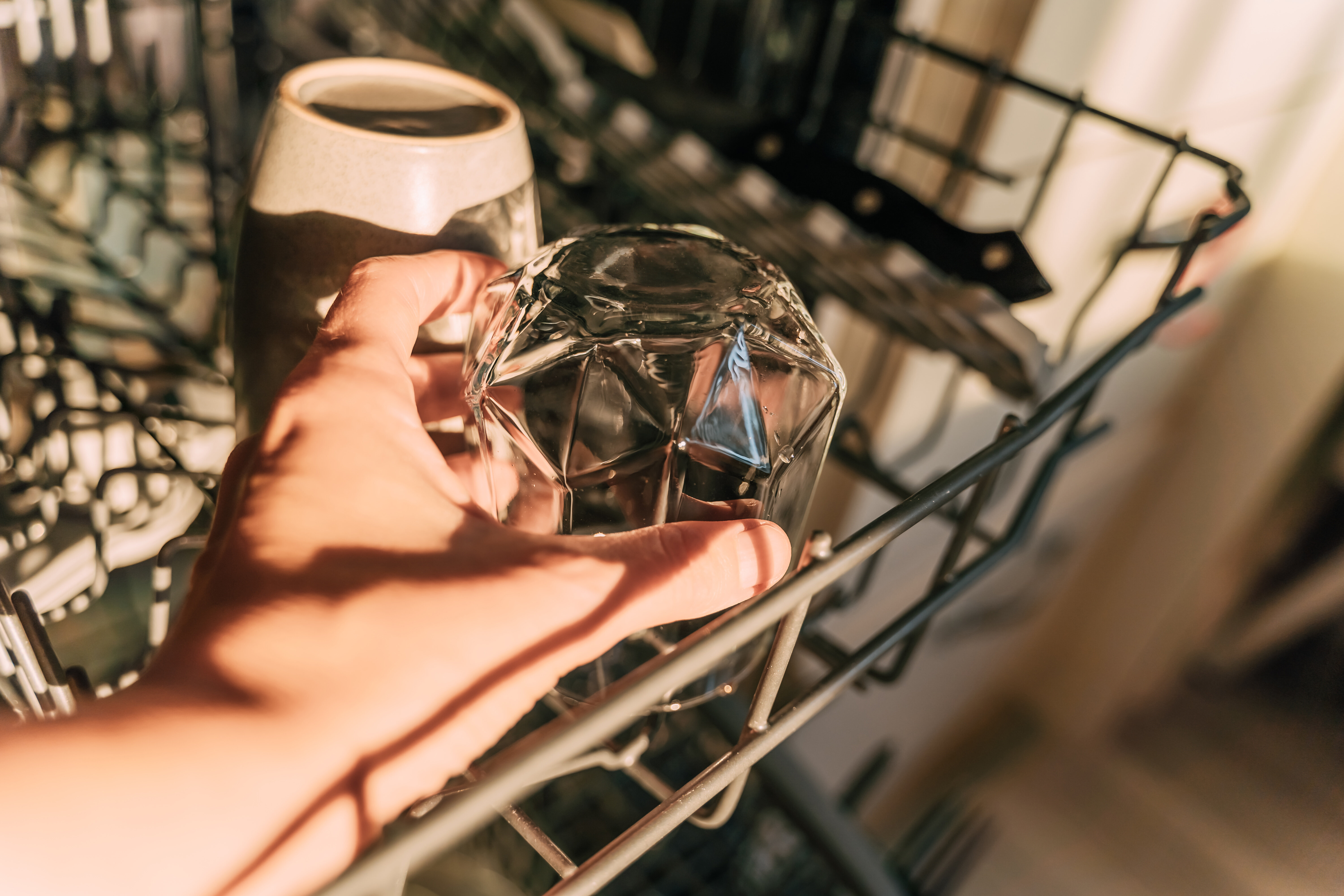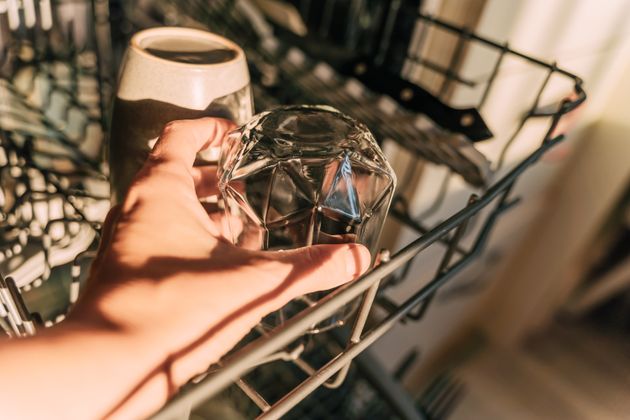
I don’t know about your household, but mine faces the same debate on repeat: should you rinse your dishes before putting them in the dishwasher, or not?
I’d always thought both sides made a valid point ― until I heard from Ian Palmer-Smith, appliance expert at Domestic & General, about the topic.
Advertisement
“One of the biggest dishwasher myths is that you need to rinse items before loading them,” he shared via email.
Here’s his reasons against pre-rinsing, as well as some other dishwasher tips from the pros.
Why shouldn’t you rinse your dishes before placing them in the dishwasher?
Palmer-Smith says that, in short, the practice is just a bit useless: “Pre-rinsing plates is a bit like hand washing your car before taking it to the car wash.”
Then, there’s the added boiler costs of using extra hot water (which, though likely not a huge percentage of your bill, are best avoided if not needed).
“In reality, [rinsing before dishwasher use] uses extra unnecessary hot water and typically won’t improve the results. Modern dishwashers use high temperatures designed to break down stubborn stains with little trouble,” he says.
Advertisement
Of course, that’s not to say you should just lob a loaded plate into your appliance, he adds. Scraping is the way forward, Palmer-Smith says, as too much gunk can clog your machine.
He concedes, however: “If you have a pan with some burnt-on food residue it can be a good idea to give it a soak beforehand.”
Still, it’s bad news for the rinsing regiment.
Dishwashers are more energy-efficient than you might think
In case you think I’m escaping the Dish Debate scot-free, you’re wrong; I’m usually a proponent of hand washing, because I always thought dishwashers used way too much energy.
But according to Palmer-Smith, I’m in the wrong.
“Even without pre-rinsing, dishwashers generally use less hot water than hand washing,” he says (that is, of course, if you have a dishwasher already).
“On average, a dishwasher uses water four times more efficiently than washing by hand so if you are running a load when the appliance is full, this can actually ease your energy bills more than most think,” the appliance pro adds ― and it turns out that science agrees.
Advertisement
Well, that’s a load of stress (literally) off my hands…








